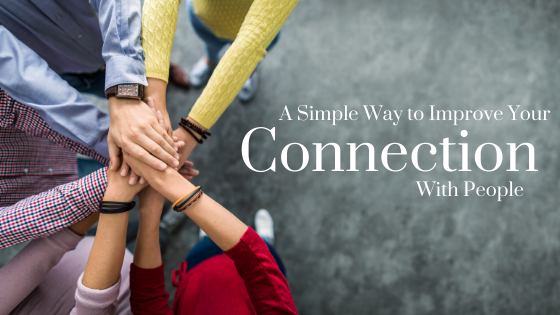A Simple Way to Improve Your Connection With People

A Simple Way to Improve Your Connection With People
November 7, 2019 by Taylor Studios
Have you
ever had an interaction with someone that went surprisingly wrong? Have you
ever rubbed someone the wrong way and had no clue what you did? Has someone
else’s behavior ever annoyed you? Have you struggled to connect with people or
lead them? Have you had misunderstandings?
What if you
had a tool that would help alleviate these problems? Or at minimum would help
you understand why things went wrong so you could do better next time.
A few years
ago, a group of us took a in which we learned about DISC profiles. DISC is a
behavioral assessment tool. It is similar to
or
personality testing. After learning DISC as part of bonding and building
rapport I was very impressed. It is easy to understand and user-friendly. After
our training class, we would often go to lunch and identify which category the
people around us were in. It was that easy.
DISC can help you:
I wanted to
share this tool with all of Taylor Studios. The problem was how to train 37
people in a cost-effective manner. The first step was having those of us that
had training start to train the leadership team. Training others is one of the
best ways to learn something more deeply. These were brief lunch and learn
types of meetings. The second step was to find a we could have everyone take. Third, we found and did
brief training in company meetings. We also share everyone’s DISC type. The
final step was ongoing training about once a year at a company meeting. We
found a cost-effective approach.
How to Identify Different Styles
D’s are
dominant and decisive. I’s are influencers. S’s are steady. C’s are compliant.
We use this simple chart.
A hand-drawn DISC chart depicting the four different personality styles assigned to individuals after completing the exercise.
D’s tend to
be extroverted and task-oriented. They adapt quickly to change and jump to new
ideas.
I’s are extroverted
and people-oriented. They also thrive in changing environments.
S’s are
introverted and people-oriented. They are steady and predictable team players.
C’s are
introverted and task-oriented. They are methodical and pay close attention to
detail.
You can
pretty much observe people’s behavior and identify their DISC style.
How to Communicate with Different Styles
D-Style
I-Style
S-Style
C-Style
Success
Feedback
from staff suggests that DISC training is beneficial. We appreciate that people
are different and that’s ok. There is more empathy and understanding. DISC brings
too. This awareness helps you interact with your environment better.
Now
at TSI you can hear people saying things like, “oh, yeah you’re an S.” They use
DISC to understand why a person reacted a certain way. If I dash through a room
on my way to getting something done people aren’t upset that I didn’t stop to
chat because they understand my profile. I have learned to slow down, be more
feeling-oriented, detail-oriented or whatever category the other person is. DISC
has helped me adjust how I relate to others.
Learning
DISC is simple and effective. I encourage you to check it out and improve your
connections and leadership.
“The more you read the more
things you’ll know. The more that you learn, the more places you will go.” ~Dr. Seuss